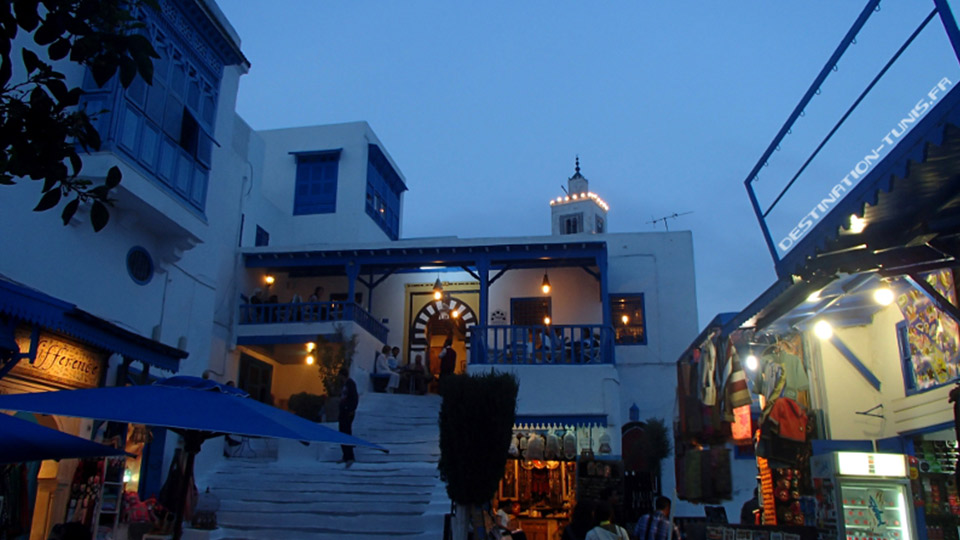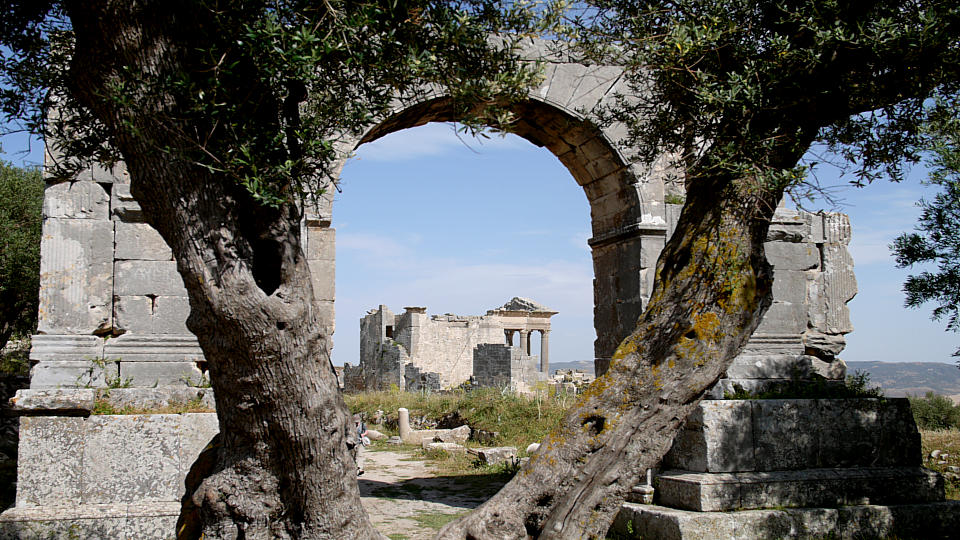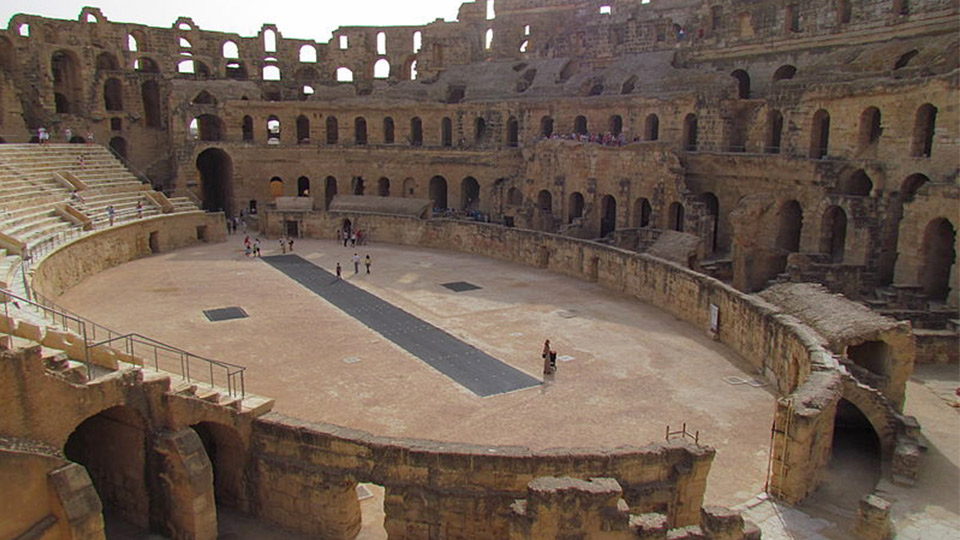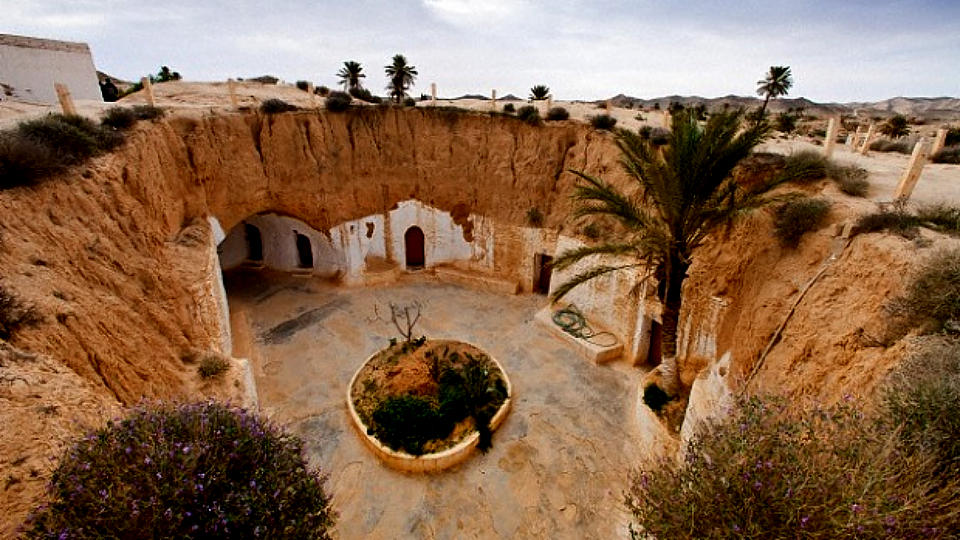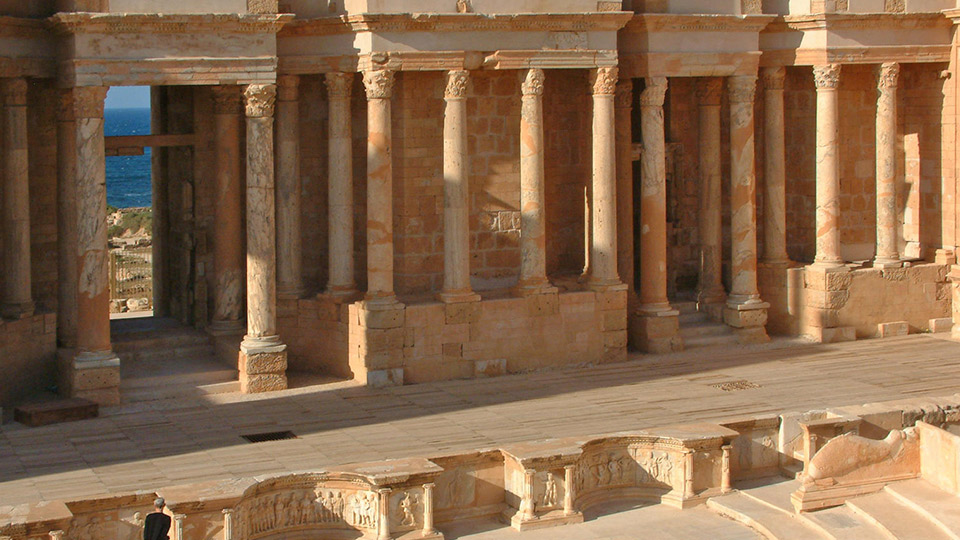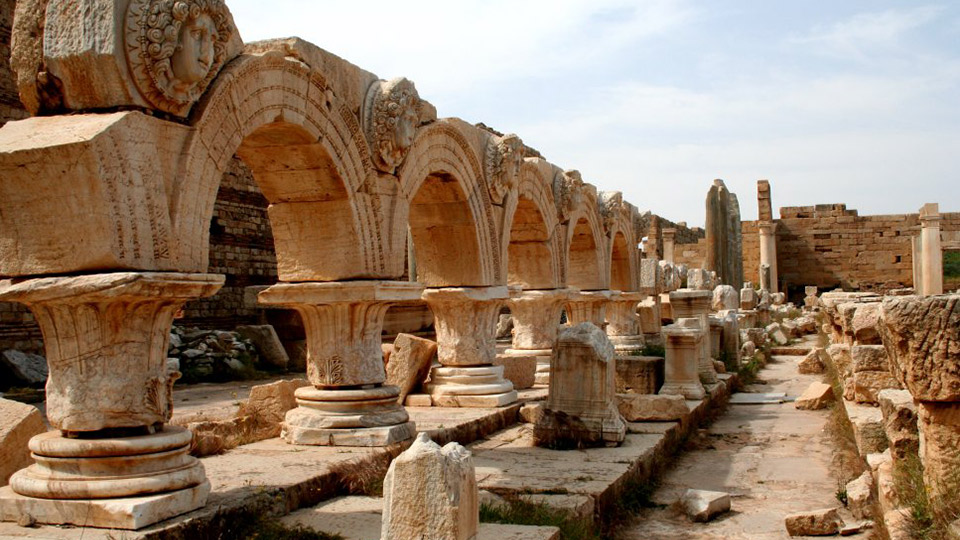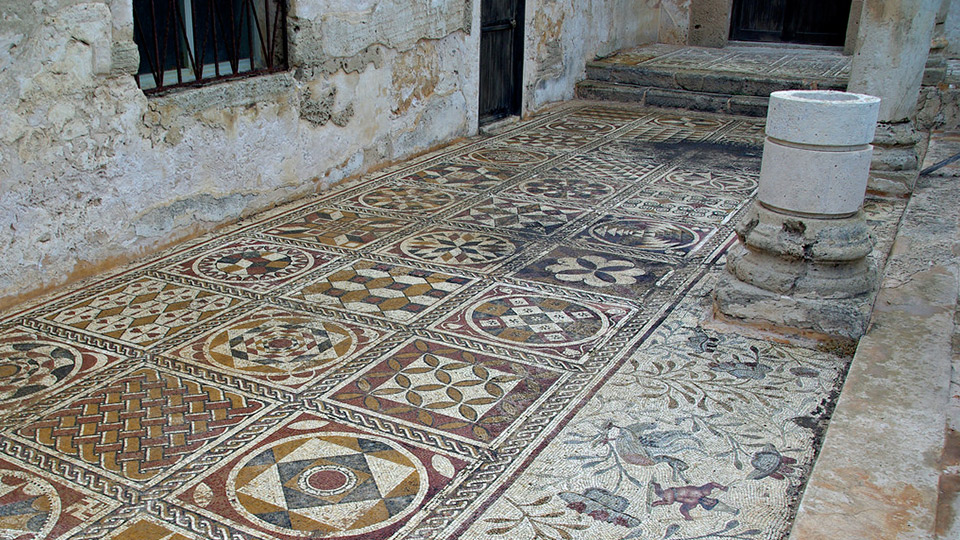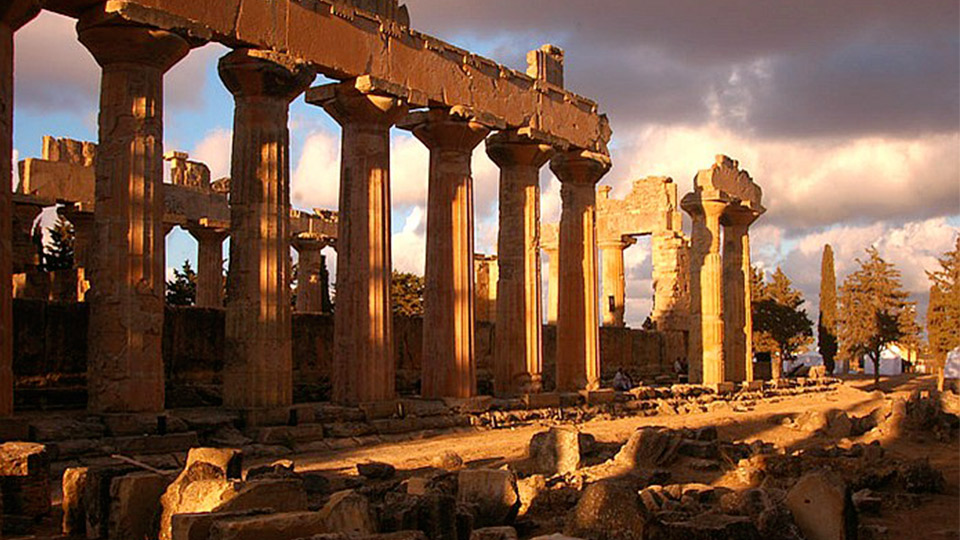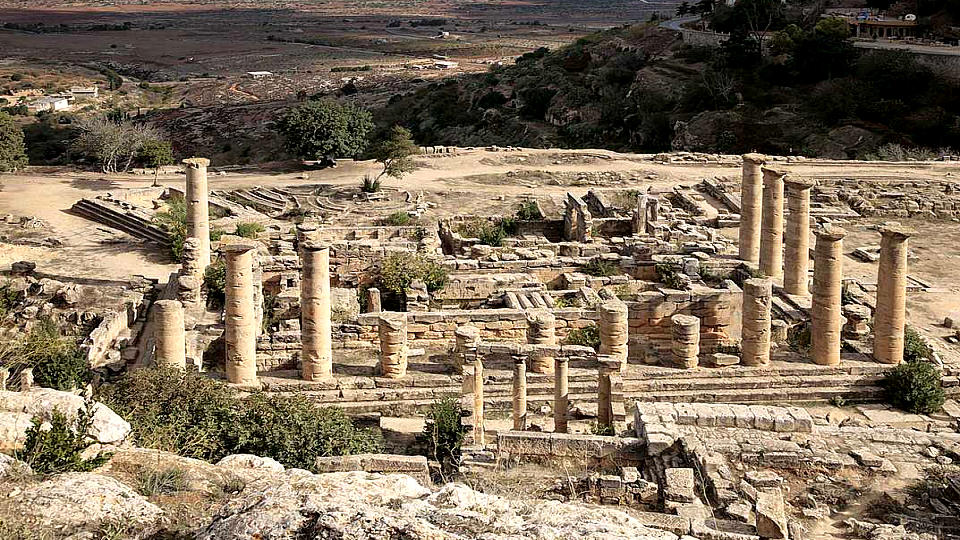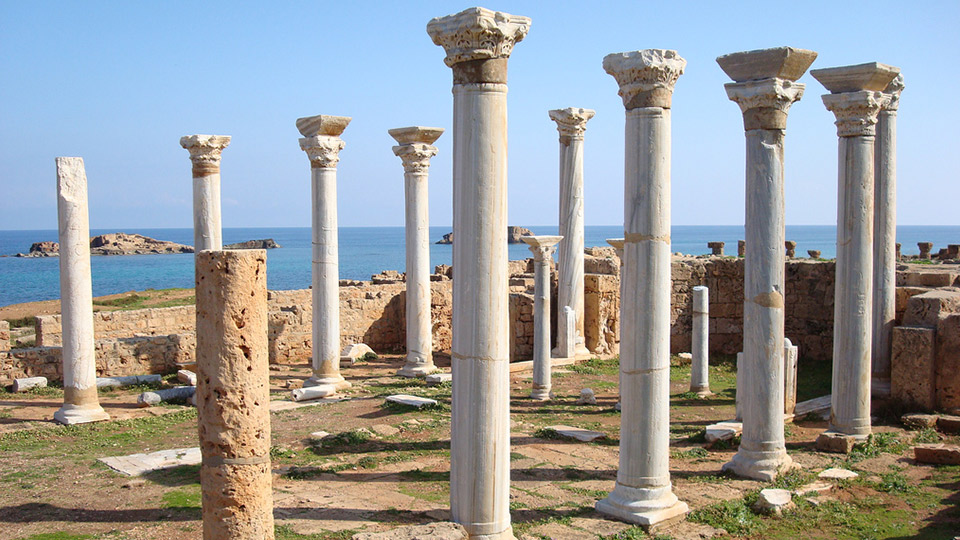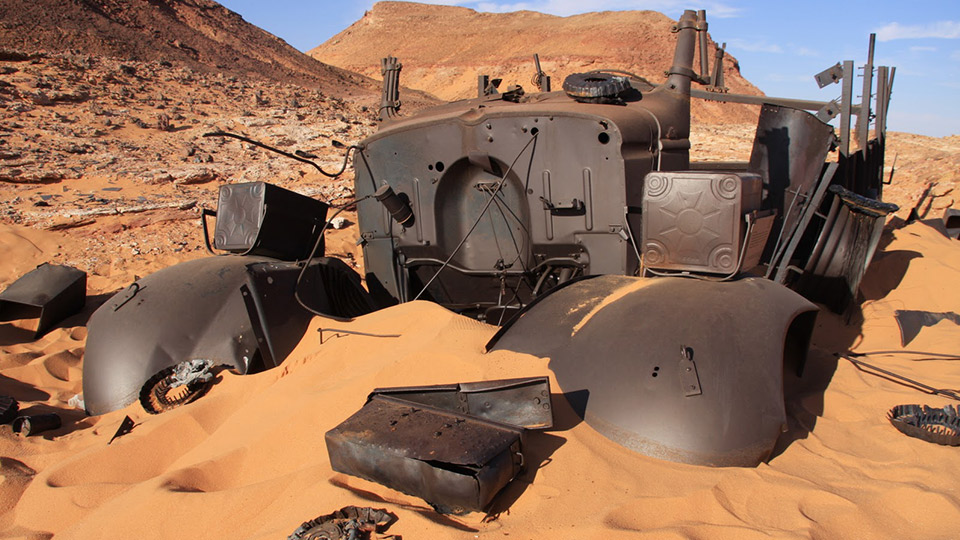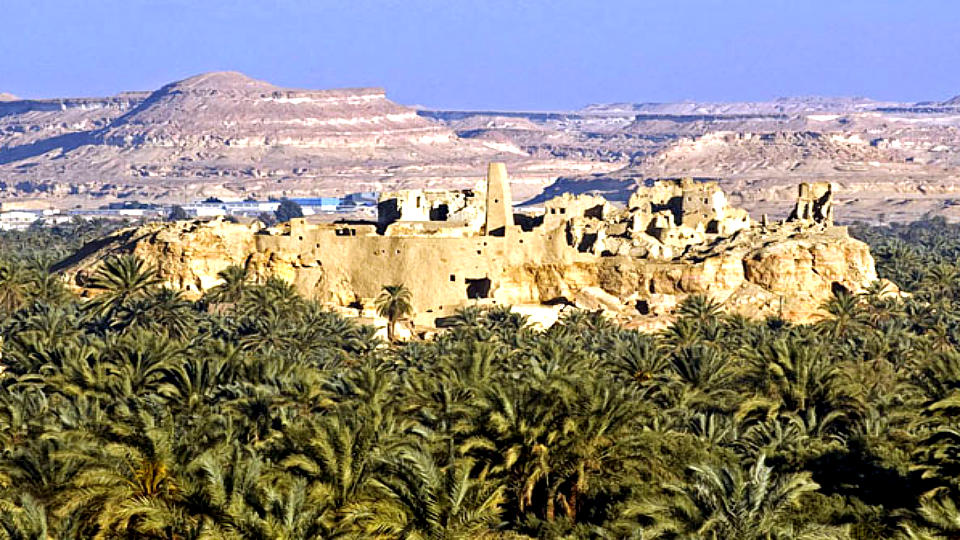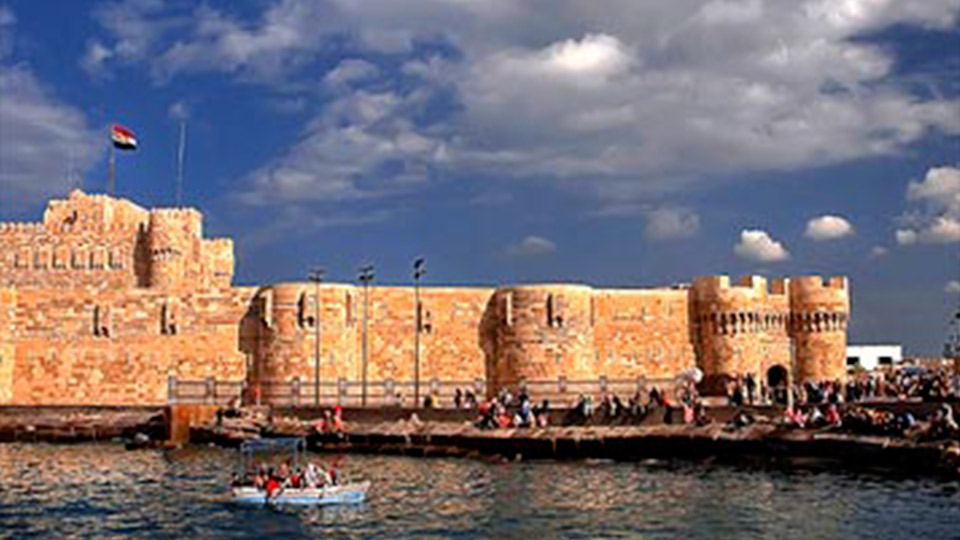Day 1: ARRIVAL IN TUNISIA
Meeting at the Airport then Transfer to the hotel. We start to explore on foot the historic Medina, the walled old city of Tunis. We then the Dar Ben Abdallah Museum. This evening we return to the medina for dinner at a restaurant which features Tunisian food accompanied by traditional folk music Dinner in town and overnight at the hotel.
Day 2 : TUNIS – CARTHAGE – SIDI BOU SAID
visit to the elegant Bardo Museum, a 13th - Century palace that features stunning exihibts of ancient mosaics then stroll among the scattered ruins of ancient Carthage, founded by the Phoenicians in 814 BC, and delve into the fabled past of this once vast and magnificent port city. Carthage was completely destroyed during the third of the Punic Wars, which were fought with Rome between 264 and 146 BC, then later rebuilt to become one of the most important cities of the Roman Empire.then travel up the coast to Sidi Bou Said, a picturesque village classified by UNESCO. Dinner & Overnight in Tunis
Day 3 : TUNIS – DOUGGA – CHEMTOU – BULLA REGIA – LE KEF
We visit the wonderful archaeological site of Dougga then we continue three superb Roman sites : Bulle Regia, Simitthu, (Chemtou) In Bulla Regia we visit the well-preserved Roman Theatre, baths and villas. We then travel on to Chemtou where we inspect the ancient quarries (that were the source of the yellow (“Numidian” marble). We also examine the remains of a mill and Roman bridge. Dinner and overnight in El-KEF.
Day 4 : LE KEF – SBEITLA – KAIROUAN – SOUSSE
In the morning we drive to Sbeitla, well preserved roman sites. Then departure to the holley city Kairouan. A walking tour of the Medina including a visit to Aghlabites bassins and many fine building in the old city. We admire the exterior of the great Mosque. Afternoon, continuation to Sousse, third largest town in Tunisia. Dinner and ovenight in Sousse.
Day 5 : SOUSSE – EL JEM – SFAX
We leave Sousse and travel to El Djem, site of the largest surviving Roman amphitheater of Thysdrus in North Africa. Constructed between 230 and 238 AD on a plateau above the town, it can be seen from miles away The structure was built to seat an estimated 35,000 spectators , making it the third largest amphitheater in the Roman world and one of the most impressive ancient architectural achievements on the African continent. Explore the site and its newly expanded museum, which houses a collection of some of Tunisia’s finest mosaics. Overnight in Sfax, second important city in Tunisia.
Day 6 : SFAX – GABES – MATMATA-DJERBA
Leaving Gabes we stop briefly at the Berber villages of Matmata and Haddej. typical lunch in troglodytes. Our eastward route then takes us via Medenine and Continue to Djerba. Tour in the island . Dinner and overnight
Day 7 : DJERBA- RAS DJEDIR – SABRATHA – TRIPOLI
Early morning departure from the hotel Djerba. Visa and immigration formalities at Ras Djedir (Tuinisian-Libyan borders)
Visit to Sabratha: visit to the site that was once a stop over for Phoenician merchants, then a Carthaginian counter and finally a Roman. Dinner and overnight in Tripoli.
Day 8 : TRIPOLI
Just after breakfast, visit to the city museum. Arch Marcus Aurelius, Gorgi Mosque, the Medina. Lunch in town. Algeria square and Italian colonial part of the city, the arcades where we can enjoy delicious tea with mint, book shops, post office, etc. Dinner and overnight .
Day 9 : TRIPOLI - LEPTIS MAGNA – TRIPOLI
Just after breakfast, a whole day devoted to the visit of the sumptuous African Rome of the emperor Septimus Severus. Lunch on site then, visit to the amphitheatre, and the port. Visit to Villa Silline. End of the day, return to Tripoli. Dinner and overnight.
Day 10 : (Flight)TRIPOLI – BENGHAZI – QASR LIBYA – APOLLONIA
In the morning, flight to Cyrenaica. We begin our tour with a visit to Ptolemais, then Gasr Libya museum. In the afternoon, we arrive to Baida. Dinner and accommodation.
Day 11 : APOLLONIA - CYRENE – APOLLONIA
Today visit the World Heritage Site of Cyrene. The most important Greek city in North Africa, Cyrene was founded in the 7th-century B.C. and it would be difficult to find a better site of Greek ruins than Cyrene. In 96 BC the Romans took possession of Cyrenaica, and it became a province of Rome eighteen years later. Built on a series of levels, the spectacular ruins of Cyrene are only partially excavated and, as you walk, you may actually discover a mosaic or statue appearing from beneath the sand. The Temple of Apollo is of principal interest as it was built as early as 7th-century B.C., and rebuilt three centuries later. Nearby is the Fountain of Apollo, the Great Baths ....The theatre is Roman, but its foundations and style are Greek. Lunch. Visit to Zeus temple and walk through Baida.. Dinner and accommodation.
Day 12 : APOLLONIA – AL ATHRUN – DERNA – TOBROUK
Apollonia was the port of Cyrene, and remained so for more than a millennium. Your visit to this site includes a detailed viewing of the Theatre, situated in a particularly picturesque location by the sea, the Eastern, Central and Western Basilicas and the Byzantine Palace. Afterward, we continue to visit the Byzantine churches at Ras Hilal and Lathrun. Then, we hit the road to Tobruk. During the Siege of Tobruk by Rommel (from March 31, 1941 to November 27,1941) the fortified area was defended by the Australian 9th Division under General Sir Leslie Morshead. We will visit the trench lines, the Australian Fig Tree Hospital site, Rommel’s Operations Room and the War Cemeteries . Dinner and accommodation.
Day 13 : TOBROUK - MARSA MATHROU – SIWA
Early In the morning, we cross the border into Egypt, continuing along the Egyptian coast to Marsa Matruh before driving to the oasis at Siwah. Overnight Siwah.
Day 14 : SIWA
Set of to visit the limestone hills of Djebel el MAwta crammed with tombs. They consist of numerous hypogees, the most ancient that date back to the 26 th dynasty of the Ptolemaic and Roman epochs. Some of them still unexcavated. The tombs consist generally of an entry way with niches and a room that contains the sarcophagus. Lunch during the visit. Exploration of Shali (the old city” founded in the 12 th century and built on a hill. It was then fortified to defend itself against the attacks and the invasions. Then, a desert excursion in 4X4 vehicles. You will admire the magnificent sunset on the dunes of Siwa.
Day 15 : SIWA – AL ALAMEIN
This morning we depart Siwah early, travelling to El Alamein, the site of the First (July 1942) and Second (Oct–Nov 1942) Battles of Alamein. The First Battle (July 1942), a defence, stalled the advance of the Axis forces and the Second Battle (Oct – Nov 1942) destroyed German hopes of occupying Egypt and controlling the Suez Canal. This allied victory under General Montgomery turned the tide in the North African campaign. At El Alamein we visit the World War II museum and the Allied War Cemetery. Dinner and Overnight in Alamein
Day 16 : EL ALAMEIN – ALEXANDRIA
We arrive at Alexandria and explore this bustling cosmopolitan city founded by Alexander the Great. We will tour the city, tracing the outline of the ancient city and seeking out indications of its scattered ruins. After lunch there will be a visit to the new Library of Alexandria which aims to revive the memory of the ancient library as an impetus to a modern cultural renaissance. More than just a repository of texts, the ancient library stimulated the development of the Alexandrian School that made the city, for a period, the literary capital of the Greek world and the modern library sees itself as heir to this tradition. Dinner and Overnight.
Day 17 : ALEXANDRIA
Visit to the city: El Morsi Abu Abbas mosque. The biggest in town with its beauteous Mousharabyas, Almontazah parc and the catacombs. Lunch. Free time in the afternoon. Dinner and Overnight.
Day 18 : DEPARTURE
Transfer to the airport, assistance with check in, and flight back

